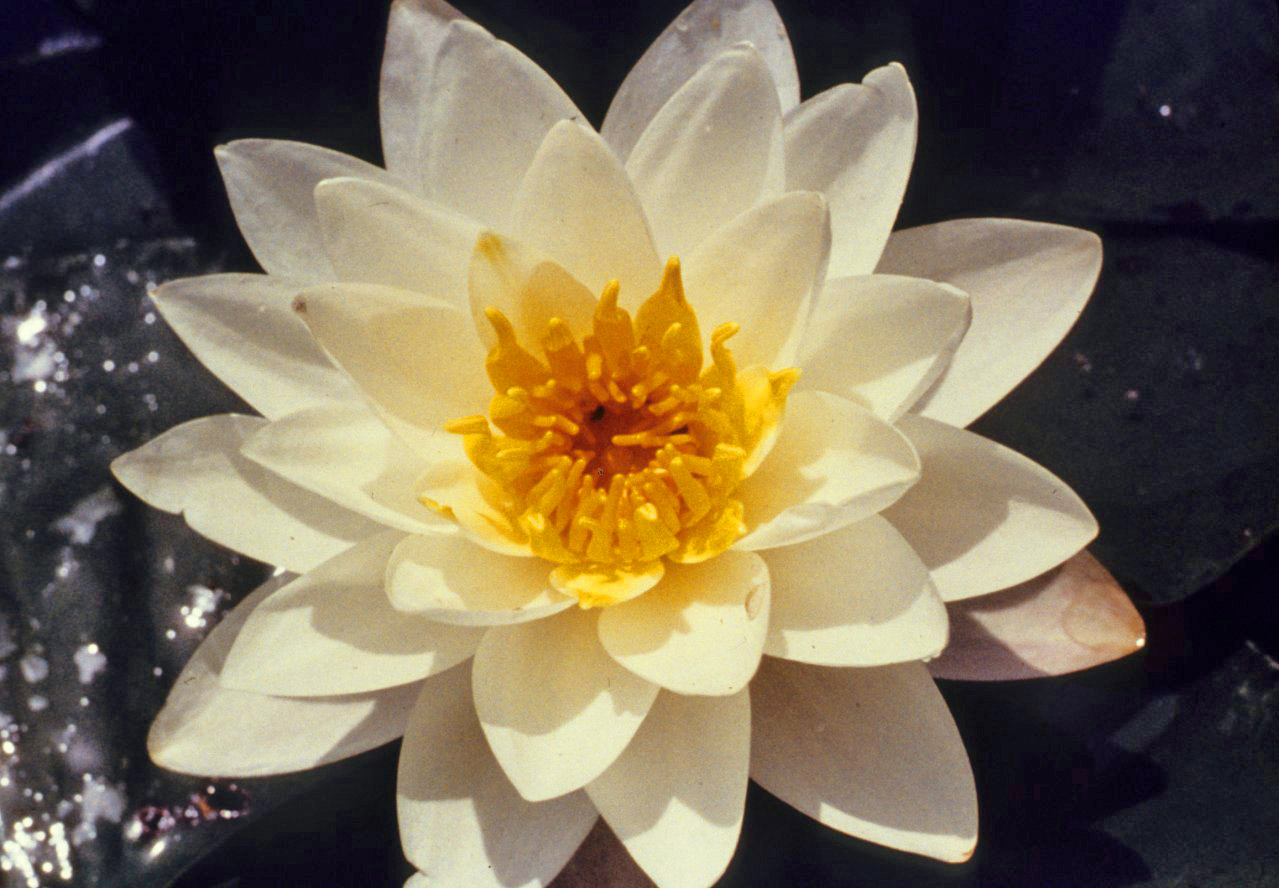Nomenclature
Nymphaea Linnaeus, Sp. Pl. 1: 510. 1753.
List of Nymphaea Species
References to Nymphaea
- Beal, E. O. 1956. Taxonomic revision of the genus Nuphar Sm. of the North America and Europe. J. Elisha Mitchell Sci. Soc. 72: 317-346.
- Borsch, T. et.al. 2007. Phylogeny of Nymphaea (Nymphaeaceae): evidence from substitutions and microstructural changes in the chloroplast trnT-trnF region. Int. J. Plant Sci. 168: 639-671.
- Clark, OM 1938. The spread of Nympodies pelatum in lake Messina. Proc. Oklahoma Acad. Sci. 18: 21-22.
- Conard, H. S. 1905. The waterlilies: a monograph of the genus Nymphaea. Publ. Carnegie Inst. Wash. 4: 1-279. (1991 facsimile)
- Cutter, E. G. 1957. Studies of morphogenesis in the Nymphaeaceae. I. Introduction: some aspects of the morphology of Nuphar lutea (L.) Sm. and Nymphaea alba L. Phytomorphology 7: 45-56.
- Cutter, E. G. 1957. Studies of morphogenesis in the Nymphaeaceae. II. Floral development in Nuphar and Nymphaea: bracts and calyx. Phytomorphology 7: 57-73.
- Etnier, S. A.; Villani, P. J. 2007. Differences in mechanical and structural properties of surface and aerial petioles of the aquatic plant Nyphaea odorata subsp. tuberosa (Nymphaeaceae). Amer. J. Bot. 94: 1067-1072.
- Les, D. H. et.al. 1999. Phylogeny, classification and floral evolution of water lilies (Nymphaeaceae; Nymphales): A synthesis of non-molecular, rbcL, matK, and 18S rDNA data. Syst. Bot. 24: 28-46.
- Les, D. H.; Schneider, E. L.; Padgett, D. J. 1997. Water lily relationships revisited: lessons learned from anatomy, morphology and molecules. Water Gard. J. 13: 21-28.
- Li, H.H. 1955. Classification and phylogeny of Nymphaeaceae and allied families. Amer. Midl. Naturalist 54: 33-41.
- Mackenzie, K. K. 1927. Proper use of the name Nymphaea. Rhodora 29: 234-7.
- Meeuse, B. J. D.; Schneider, E. L. 1979. Nymphaea revisited: A preliminary communication. Israel J. Bot. 28: 65-79.
- Meeuse, B. J. D.; Schneider, E. L. 1980. Nymphaea revisited: a preliminary communication. Israel J. Bot. 28: 65-79.
- Monson, P. H. 1960. Variation in Nymphaea, the white waterlily, in the Itasca state park region. Minnesota Aca. Sci. 25-26: 26-39.
- Moseley, M. F. 1961. Morphological studies of the Nymphaeaceae. II. The flower of Nymphaea. Bot. Gaz. 122: 233-259.
- Moyle, J. B. 1945. Some chemical factors influencing the distribution of aquatic plants in Minnesota. Amer. Midl. Naturalist 34: 402-420.
- Rehder, A. et al. et.al. 1935. Conservation of later generic homonyms. Kew Bull. 1935: 341-544.
- Seago, J. L. 2002. The root cortex of the Nymphaceae, Cabombaceae, and Nelumbonaceae. J. Torrey Bot. Soc. 129: 1-9.
- Villani, P. J.; Etnier, S. A. 2008. Natural history of heterophylly in Nymphaea odorata ssp. tuberosa (Nymphaeaceae). Northeastern Naturalist 15: 177-188.
- Wiersema, J. H. 1988. Reproductive biology of Nymphaea (Nymphaeaceae). Ann. Missouri Bot. Gard. 75: 795-804.
- Wiersema, J. H. 1996. Nymphaea tetragona and Nymphaea leibergii (Nymphaeceae): Two species of diminutive water-lilies in North America. Brittonia 48: 520-531.
- Williams, G. R. 1970. Investigations in the white water-lilies (Nymphaea) of Michigan. Michigan Bot. 9: 72-86.
- Wood, C. E. 1959. The genera of the Nymphaeaceae and Ceratophyllaceae in the southeastern United States. J. Arnold Arbor. 40: 94-112.
- Woods, K. et.al. 2005. Pattern of variation and systematics of Nymphaea odorata: I. Evidence from morphology and inter-simple sequence repeats (ISSRs). Syst. Bot. 30: 471-480.
- Woods, K. et.al. 2005. Pattern of variation and systematics of Nymphaea odorata: II. Sequence information from ITS and trnL-trnF. Syst. Bot. 30: 481-493.
- Yoo, M. J. et.al. 2010. Expression of floral MADS-box genes in two divergent water lilies: Nymphaeales and Nelumbo. Int. J. Plant Sci. 171: 121-146.
